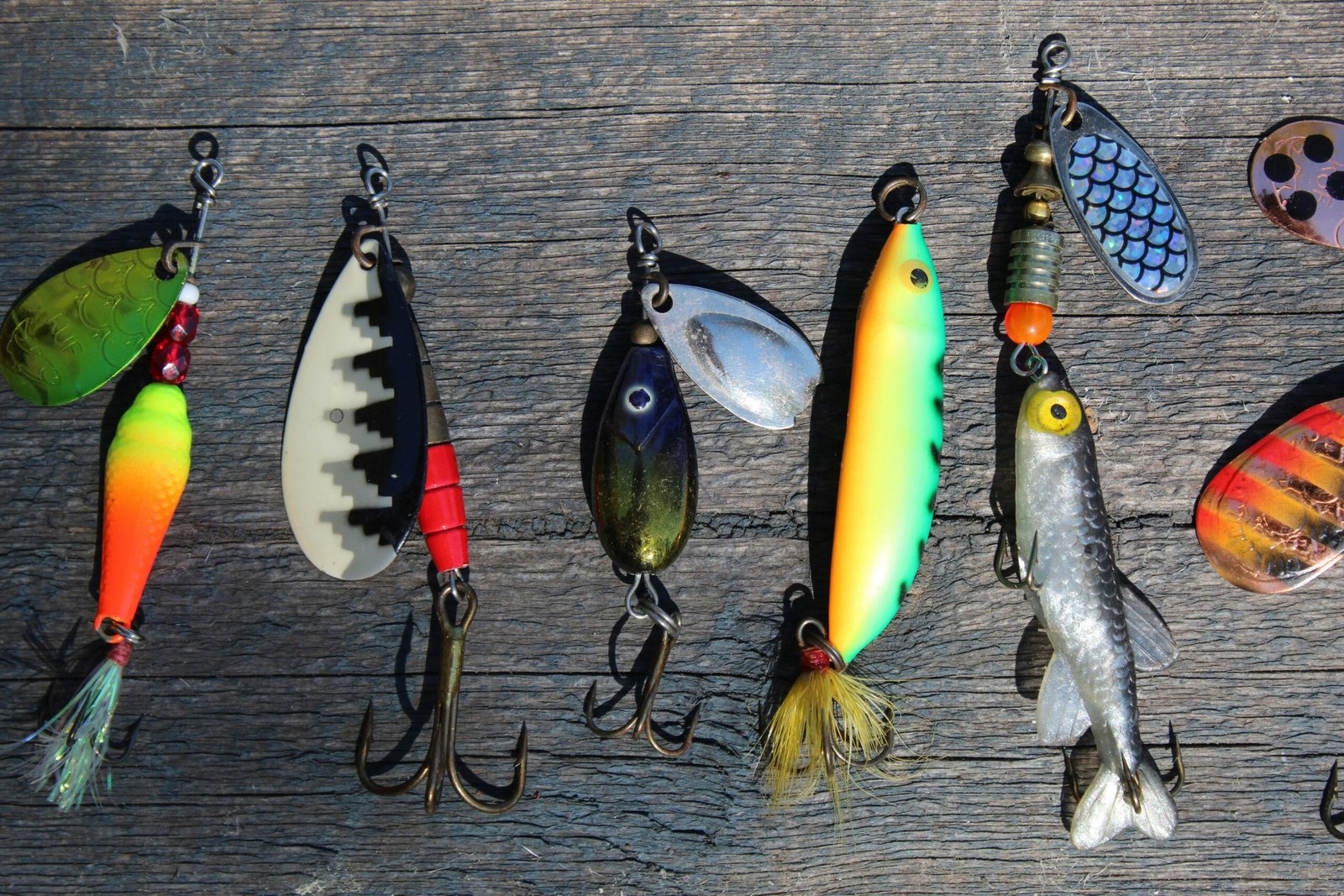Understanding the capacity of a bait mold is essential for fishing enthusiasts and DIY lure makers alike. The amount of material a mold can hold directly impacts the effectiveness and consistency of lures, which are critical for successful fishing experiences. For countless anglers, particularly those who prefer creating their own bait, knowing how many ounces a bait mold can accommodate is a foundational aspect of their craft.
This article will provide a comprehensive overview of the various factors that influence the capacity of bait molds, particularly focusing on their measurement in ounces. It is important to note that bait molds come in a range of sizes, each designed for specific types of lures, and their capacity can vary significantly. Factors such as mold design, shape, and intended usage play a crucial role in determining how many ounces a mold can hold, making it important for readers to understand these nuances.
Moreover, this guide will delve into standard measurements for bait molds that are widely used in the fishing community. This understanding can aid individuals in selecting the right mold for their particular fishing needs. We will also discuss the implications of the mold’s capacity on bait production and provide practical guidance to help readers make informed decisions.
As we explore these aspects, our primary focus will remain on clarifying the question of how many ounces are in a bait mold. By the end of this article, readers will be equipped with valuable insights and knowledge that can enhance their fishing skills and lure-making processes, encouraging a more fruitful and enjoyable fishing experience.
Understanding Bait Molds
Bait molds are specialized tools used in the fabrication of fishing baits, allowing anglers to create custom lures tailored to their specific fishing needs. These molds serve a crucial role in the fishing industry, enabling enthusiasts to produce baits that can mimic the appearance and action of various aquatic species. The use of bait molds has grown in popularity due to the advantage they offer in terms of customization, cost-effectiveness, and efficiency compared to purchasing commercially available fishing lures.
There are two primary types of bait molds: soft plastic bait molds and hard bait molds. Soft plastic molds are typically crafted from materials like aluminum or silicone and are designed to produce flexible, soft baits that resemble worms, grubs, or other types of aquatic life. These molds come in various shapes and sizes, allowing for the creation of unique lures that can be infused with different colors and scents. Soft plastic baits are particularly appreciated for their lifelike movement in the water, making them attractive to fish.
On the other hand, hard bait molds are utilized to produce more rigid lures, such as crankbaits, jerkbaits, and jigs. These molds often require a different manufacturing process, incorporating materials like resin or injection-molded plastics. Hard baits are known for their durability and can produce a variety of actions depending on their design, which makes them effective in diverse fishing environments.
Whether one prefers the flexibility of soft plastic bait molds or the robustness of hard bait molds, both provide anglers with the opportunity to engage in custom bait making. This hands-on approach not only enhances the fishing experience but also cultivates a deeper understanding of the intricacies involved in lure creation, leading to a more successful fishing adventure.
Standard Measurements of Bait Molds
Bait molds are essential tools for fishing enthusiasts who wish to create customized lures. Understanding the standard measurements of bait molds is critical to achieving the desired results. Typically, bait molds are measured by their ounce capacities, which can range from small, 1-ounce molds to larger, multi-ounce options. Common capacities include 1 oz, 2 oz, 4 oz, and even larger sizes, providing anglers with various choices depending on their specific needs.
The size and design of the bait mold play a significant role in determining its overall capacity. For instance, a 1-ounce bait mold is ideal for crafting smaller lures that are effective for targeting panfish or smaller species. In contrast, a 4-ounce mold can accommodate heavier lures suitable for larger fish such as bass or pike. Additionally, the complexity of the mold design, including features like slots or cavities, can influence the amount of bait it can hold. Understanding the standard lure mold capacity allows anglers to select molds that align with their fishing strategies.
When shopping for bait molds, it is also imperative to consider the materials used in their construction. Some molds are made from durable plastics, while others may be crafted from aluminum or silicone. Each material type may alter the heat retention and distribution during the casting process, affecting the final product’s quality. As a result, anglers should pay attention to both the size and the material of the mold to ensure they can achieve consistent outcomes. In conclusion, selecting the appropriate bait mold size and understanding its capacity is vital for creating effective and customized lures for a successful fishing experience.
Factors That Affect Mold Capacity
Understanding the various factors that can influence the capacity of a bait mold is essential for fishing enthusiasts who wish to create custom lures effectively. The first significant factor is the type of bait being produced, which can vary widely between soft and hard lures. Soft bait molds typically require different considerations, such as flexibility and curing time, which can impact how many ounces of material are used during the casting process. In contrast, hard bait molds often involve more precision, as the materials must be compatible with the expected behavior of the final product in water.
Another crucial aspect to consider is the complexity of the mold design. More intricate molds may feature multiple cavities or detailed features that enhance the lure’s realism and effectiveness. Such complexities can directly affect the volume of material needed, potentially leading to variations in mold capacity. A simple mold may hold a smaller volume more effectively, while a complex design could require precautions to ensure accurate filling, ultimately influencing how many ounces the mold can accommodate.
Finally, the materials utilized in crafting the molds play a vital role in determining their capacity. For instance, silicone molds are known for their ability to create highly detailed lures and can offer better flexibility, while aluminum molds often provide a more rigid structure but may not capture intricate details as effectively. The choice of material can thus dictate how many ounces each type of mold can hold, directly impacting the custom lure mold factors. Taking these elements into account will enhance the efficiency and effectiveness of bait production, leading to better fishing outcomes.
How to Calculate the Ounces in a Bait Mold
Calculating the ounces in a bait mold is a straightforward process that requires careful measurement to ensure accuracy. This guide aims to assist fishing enthusiasts in determining the mold capacity, which is essential for customizing lures effectively. To start, gather the necessary materials: your bait mold, a graduated measuring cup or water source, and a digital scale.
The first step is to fill the bait mold with water. This step is crucial as it allows you to measure the volume of the mold accurately. Use a graduated measuring cup for a precise volume measurement. Gradually pour water into the mold until it is full, ensuring that there are no air bubbles trapped inside. This step ensures that you obtain the accurate capacity of the bait mold without any obstructions.
After filling the mold, it is important to weigh the water, as its weight will help you confirm the capacity of the mold in ounces. To do this, pour the water from the bait mold into the measuring cup and weigh it on your digital scale. The weight in ounces directly correlates to the volume of water you have used to fill the mold, as one fluid ounce of water weighs approximately one ounce. When measuring, it’s vital to ensure the scale is zeroed out before taking the measurement to avoid discrepancies.
Finally, rounding your calculation to the nearest ounce can simplify the process when creating multiple lures. Knowing the mold capacity will enable you to replicate successful bait designs and experiment with different materials effectively. By following these steps, fishing enthusiasts can easily calculate the ounces in a bait mold, ultimately enhancing their fishing experience.
Popular Bait Mold Sizes for Different Fishing Needs
Understanding the various sizes of bait molds is crucial for fishing enthusiasts, as the effectiveness of bait often hinges on the proper selection of size for specific fishing conditions. This section aims to categorize bait molds into three primary sizes: small, medium, and large, delineating their respective uses in enhancing fishing success.
Small bait molds, typically weighing less than 1 ounce, are favored for finesse fishing techniques. These molds produce delicate and lightweight baits that can mimic the natural movement of smaller prey, making them ideal for targeting species such as trout or panfish. Baits crafted from small molds are often used in conjunction with lighter lines and rods, which allow for a more subtle presentation. Many anglers regard small bait molds as among the best bait mold sizes for precise applications, making them indispensable tools in a sportsperson’s arsenal.
Transitioning to medium bait molds, which range from 1 to 3 ounces, these molds are the go-to choice for general-purpose baits. They strike a balance between weight and size, offering versatility for a wide spectrum of fishing scenarios. Medium-sized baits can efficiently target species such as bass and walleye. Additionally, baits from medium molds can be utilized in various water conditions, from lakes to rivers, making them a staple in many anglers’ gear. Thus, the medium category is often featured prominently in the bait mold ounce guide due to its adaptability.
Finally, large bait molds that weigh 4 ounces or more are specifically designed for big game fishing. These molds create heavy baits suitable for catching larger species like tuna and marlin. The increased weight and size help in casting further distances into deeper waters where big fish tend to reside. Choosing the right large bait mold can significantly enhance the likelihood of a successful catch during deep-sea adventures.
Tips for Choosing the Right Bait Mold
When selecting the right bait mold, several crucial factors must be taken into account to ensure a successful fishing experience. Understanding the type of fishing you intend to pursue is paramount. Different fishing techniques, whether it be freshwater or saltwater fishing, require particular baits that are tailored to the fish species being targeted. For instance, if you are interested in bass fishing, you might want to consider molds that allow for soft plastic baits mimicking the local forage.
Additionally, identifying the target fish species and their respective bait preferences is essential. Certain fish are attracted to specific types of baits, which vary widely based on their habitat and feeding behaviors. Researching the preferred baits of your target species can inform your decision on the molds you will choose. For example, catfish often respond well to larger, more robust lures, whereas panfish may require smaller, lighter baits. A good approach is to make use of fishing forums or consult seasoned anglers who can provide invaluable insights into the most effective types of bait for your locality.
The material of the bait mold is another significant consideration. You will find molds available in different materials, each with its advantages and disadvantages. Flexibility, durability, and ease of cleaning are all factors that can influence your choice. Silicone molds tend to be popular due to their versatility and ease of use, while metal molds may provide a longer-lasting option. Ultimately, your selection should take into account how frequently you plan to use the molds and the types of baits you wish to craft.
By carefully evaluating these aspects of choosing fishing lure molds, you can maximize your chances of successful fishing outings. This thoughtful approach ensures that the bait created will effectively attract the fish you are targeting.
FAQs About Bait Mold Capacities
Many fishing enthusiasts are often curious about bait mold capacities and how to optimize their use. One of the frequently asked questions revolves around the average capacity of a bait mold. Typically, the standard bait mold can hold anywhere from 2 to 16 ounces, depending on the design and intended lure size. It’s essential for anglers to select a bait mold that corresponds with the type of lures they aspire to create, enabling them to fine-tune their fishing strategy effectively.
Another common inquiry relates to ensuring that a mold holds the correct amount of material. To achieve precision, it’s advisable to familiarize oneself with the specific measurements provided by the manufacturer. Additionally, utilizing measuring tools can help verify that the bait mold is being filled with the desired volume. It is also useful to consider factors such as the viscosity of the material used; a thicker substance may require a slightly different approach to achieve accurate capacity. Understanding these nuances can significantly enhance the lure-making experience.
Lastly, inquiries about the feasibility of modifying a bait mold to adjust its capacity often arise among serious hobbyists. While some molds allow for modifications, alterations should be approached cautiously. Increasing the volume may affect the mold’s structural integrity or the final lure’s performance in the water. It’s often recommended that users experiment with various molds rather than extensively modifying one. Engaging with bait mold FAQs and utilizing a lure mold ounce guide can facilitate informed decisions and foster creativity among fishing enthusiasts.
Conclusion
In summary, understanding the capacities of bait molds is essential for fishing enthusiasts who strive to create effective and tailored lures. Knowing how many ounces each mold can hold not only aids in precise measurements but also allows for consistency in lure making. By mastering the ounce capacities of various bait molds, anglers can enhance their fishing strategies, making their lures more attractive to a wider range of fish.
We encourage readers to explore a variety of bait molds and sizes to discover which options work best for their personal fishing experiences. Experimentation is key in this craft, as different shapes and weights can influence the performance of the lure in drastically varied fishing environments. Engaging in this practice may reveal new techniques and preferences that can significantly improve fishing success.
Moreover, we invite our readers to share their experiences regarding different bait molds. Your insights could help fellow anglers and enrich our community’s knowledge. If you have favorite bait molds or specific questions related to lure making, please feel free to reach out in the comments section. Sharing ideas not only fosters learning but also builds connections among fishing enthusiasts. We look forward to hearing about your experiments and discoveries in the world of bait making, as collaboration and shared knowledge are vital in enhancing our fishing adventures.


